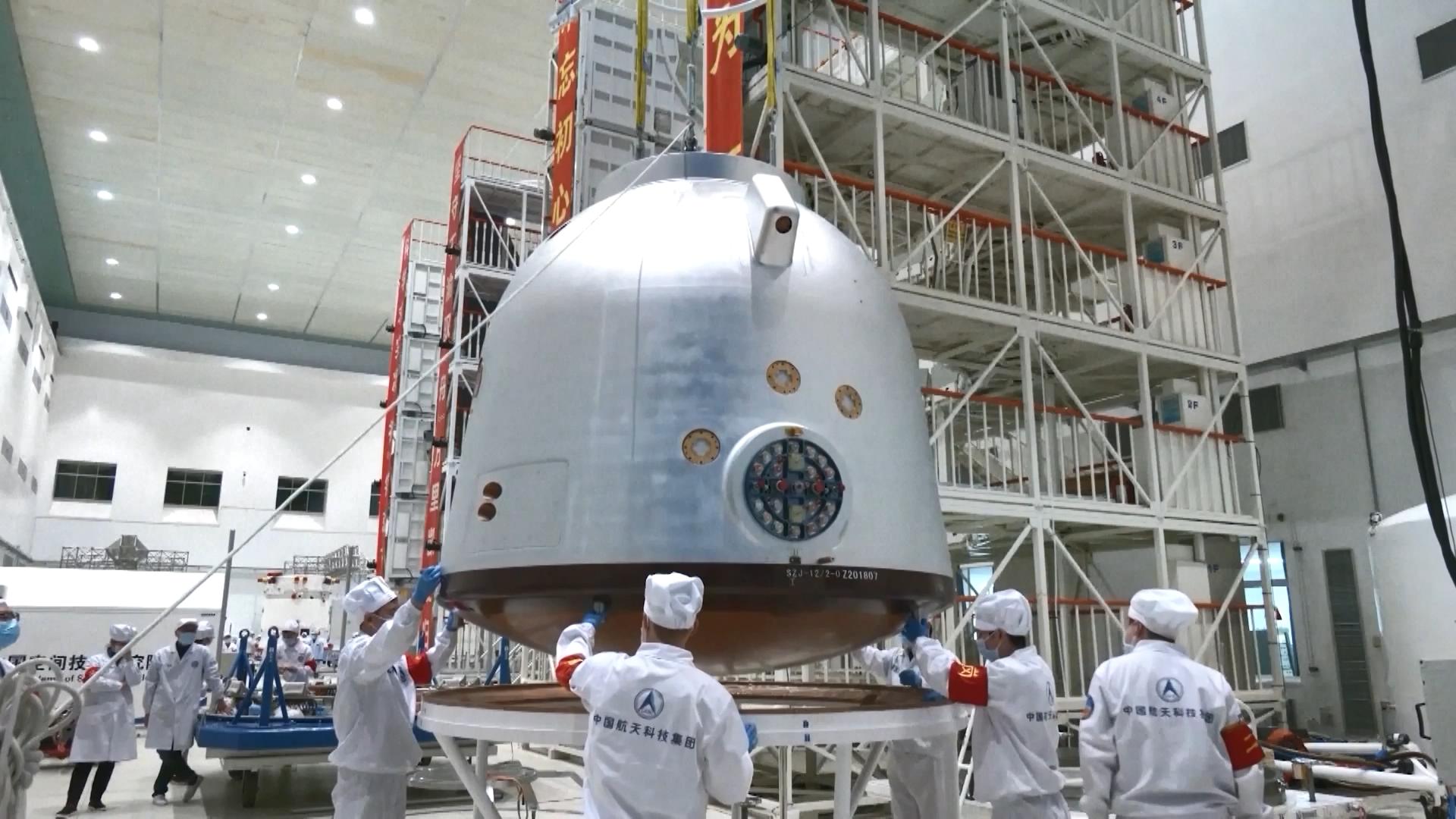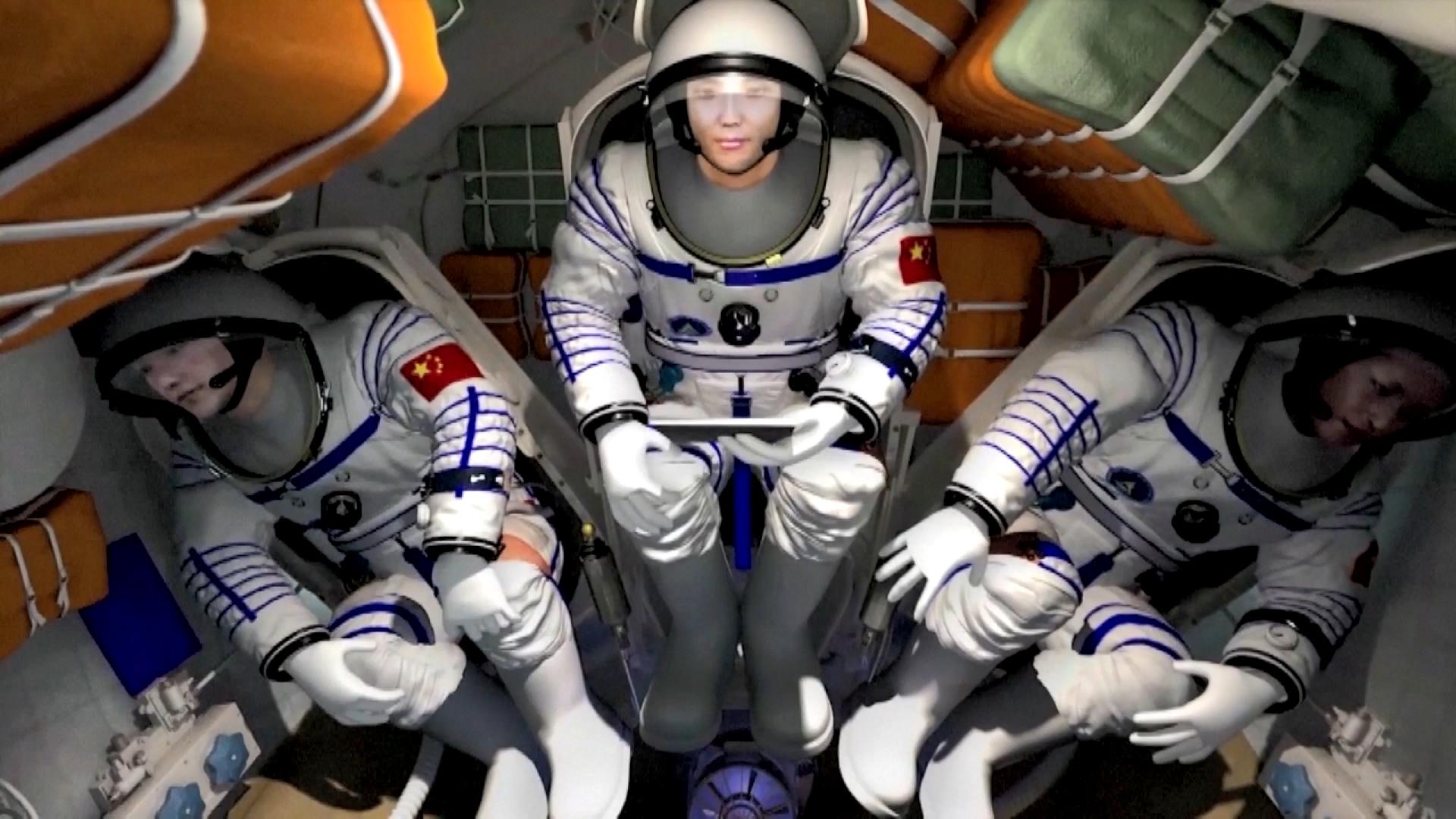
Based on the mission requirements, the Shenzhou-14 spaceship has been adapted to improve safety and reliability. /China Media Group
Based on the mission requirements, the Shenzhou-14 spaceship has been adapted to improve safety and reliability. /China Media Group
China launched the Shenzhou-14 crewed spaceship on Sunday, sending three astronauts to its space station for a six-month mission.
Based on the mission requirements, the Shenzhou-14 spaceship has been adapted to improve safety and reliability.
"We've made achievements in domestic development of some raw materials and prototype models for the Shenzhou-14 spacecraft and have improved the reliability of related products, therefore, further increasing the spacecraft's reliability and security," said Jia Shijin, chief designer of the manned spacecraft system under the China Academy of Space Technology (CAST).
"We made consistency comparisons on the Shenzhou-14 spaceship's key performance indicators with data of previous spaceships which completed their missions successfully, before the spacecraft left the factory and when it was at the launching site," said Xiao Xuedi, lead designer of the manned spacecraft general system under CAST.
"Such comparisons were also conducted on its own testing results at different times and stages. By doing so, we wanted to make sure its quality was controllable and steady," Xiao added.
If any emergency happened during the spaceship's autonomous flight, it had the capacity to return to Earth at any time. Should a life-threatening accident happen to the astronauts at the space station, Shenzhou-14 would be able to evacuate and return to Earth safely.
"We've made backup designs at crucial points. There would be no such case where one device's sudden failure will pose a threat to the astronauts' life and safety. Meanwhile, we have strict process control over sources of danger, such as explosive devices and high-pressure gas, so as to ensure the spaceship's absolute safety," said Gao Xu, chief designer of the manned spacecraft general system under CAST.
Personalized designs ensure comfortable journey for astronauts

As the astronauts will sit for hours during their journey, researchers have specially designed their seats in the less than 6-cubic-meter re-entry module. /China Media Group
As the astronauts will sit for hours during their journey, researchers have specially designed their seats in the less than 6-cubic-meter re-entry module. /China Media Group
As the astronauts will sit for hours during their journey, researchers have specially designed their seats in the less than 6-cubic-meter re-entry module.
"We equipped the seats with ergonomic anti-shock pads, which were designed depending on every astronaut's need to ensure their comfort. The seats were also designed to strictly control the dynamics environment during the flight such as the overload shock in the return trip while guaranteeing the in-orbit safety and comfort of the astronauts," said Gao.
The anti-shock pads are "a cushion that's tailored to each taikonaut's body shape. We've made sure that they can curl up in an infant position comfortably," said Xiao Xuedi.
Researchers took into consideration the cabin environment including the temperature, humidity and noise during their design.
"By using the Environmental Control and Life Support System, the temperature and humidity in the cabin will be maintained at a very comfortable level," said Gao.
Xiao said there has been some fine-tuning for the Shenzhou-14 manned spaceship to help it cope with low-temperature environments.
"Low temperatures threaten the in-capsule equipment. When the temperature inside the spacecraft is too low, the equipment could 'fog up' and malfunction because of a short circuit," Xiao said.
"To address that, we updated our heating system, anticipating the areas that are more at risk through simulation and gave these areas more ways to adjust to the changes in temperature."
Xiao said the Shenzhou manned spaceship has its own temperature control system. The space station also keeps the temperature stable by regulating the air that passes through. And there are control panels on the wall that automatically maintain optimal heat levels.
"An air cleaning system was also equipped to purify the carbon dioxide generated by our astronauts and other harmful gases in the air. And we also strictly control the environmental noise in the cabin to ensure there won't be too much noise during their in-orbit flight," said Gao.
Even though the comfortable cabin environment has been improved, considering the limited space in the spacecraft, researchers minimized the docking time in order to send them to the space station as soon as possible.
"The docking time was two days, but now it becomes a 6.5-hour automatic docking. It greatly shortens the ride time, and therefore improves the astronauts' experience and comfort," Jia said.

